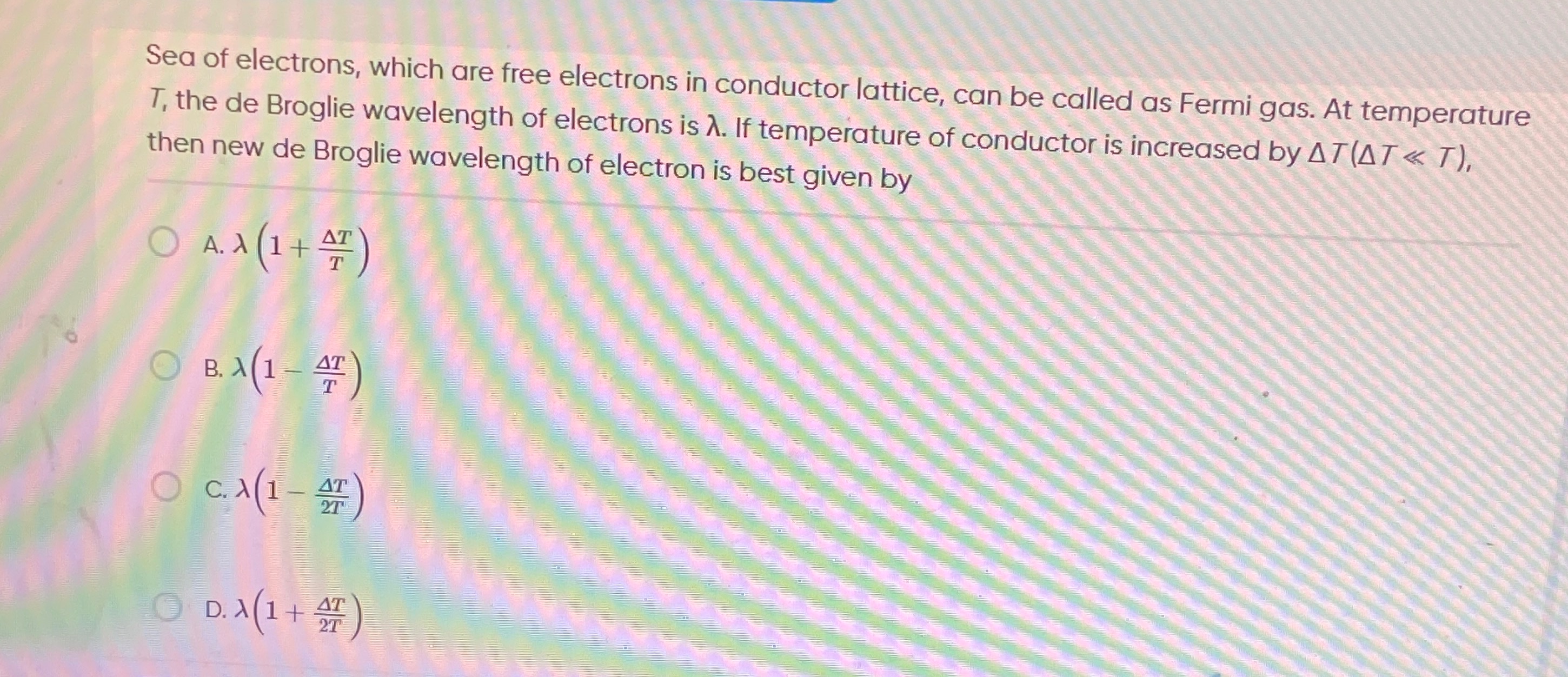Question
Question: Sea of electrons, which are free electrons in conductor lattice, can be called as Fermi gas. At temp...
Sea of electrons, which are free electrons in conductor lattice, can be called as Fermi gas. At temperature T, the de Broglie wavelength of electrons is λ. If temperature of conductor is increased by ΔT(ΔT≪T), then new de Broglie wavelength of electron is best given by

λ(1+TΔT)
λ(1−TΔT)
λ(1−2TΔT)
λ(1+2TΔT)
λ(1−2TΔT)
Solution
The de Broglie wavelength (λ) of a particle is given by λ=ph, where h is Planck's constant and p is the momentum. The momentum is related to the kinetic energy (Ek) by p=2mEk, where m is the mass of the particle. Thus, the de Broglie wavelength is inversely proportional to the square root of the kinetic energy: λ∝Ek1 For a classical gas, the average kinetic energy per particle is directly proportional to the absolute temperature: Ek∝T. Although the question mentions "Fermi gas," the options provided suggest a simplified model where the temperature dependence of the relevant electron energy follows the classical gas behavior. Therefore, we can assume: Ek∝T Combining these relationships, we get: λ∝T1 Let λ1 be the de Broglie wavelength at temperature T1=T, and λ2 be the new wavelength at temperature T2=T+ΔT. We can write: λ1=C⋅T−1/2 λ2=C⋅(T+ΔT)−1/2 where C is a constant of proportionality. Now, we can express λ2 in terms of λ1: λ2=C⋅T−1/2(1+TΔT)−1/2 λ2=λ1(1+TΔT)−1/2 Given that ΔT≪T, we can use the binomial approximation (1+x)n≈1+nx for small x. Here, x=TΔT and n=−21. (1+TΔT)−1/2≈1+(−21)(TΔT)=1−2TΔT Substituting this approximation back into the expression for λ2: λ2≈λ1(1−2TΔT) Thus, the new de Broglie wavelength is approximately λ(1−2TΔT).
